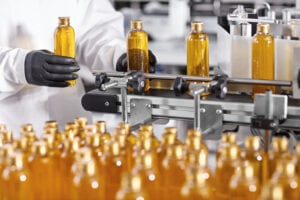Every Friday night during the summer we light a campfire and make s’mores, much to my daughter’s delight. It’s a tradition, I suppose. I remember the first time my husband started the fire. It was awful. He used so much lighter fluid that when it ignited, it went way up into the night sky…then quickly extinguished itself. After several tries, he was finally successful. We had some pretty happy kids. Near the end of each burn and as the adult conversation waned, the fire would falter, desperately gasping for more oxygen and fuel to continue on. The kids liked to throw anything they could get their tiny little hands on, just for one more moment of fiery excitement.
I liken this experience to the story that’s already playing out in the mining industry. A once steady burn, industry performance has stalled; gasping for something…anything to prove it can keep burning and be sustainably profitable. It’s a story of gloom and doom—high costs; poor integration; constant attrition; demographic time bomb; substandard control. Like ashes in the wind. The fire struggles and goes out, or…maybe, if you’re lucky, given the right conditions, it can re-ignite with a boom.
The Gloom
The commodities mining business remains volatile. The cyclical nature of ore prices makes the market subject to wide swings. Cost controls, return on capital, and commodity prices are the industry’s biggest concerns. Companies must maximize returns from existing operations by improving productivity and efficiencies, not by increasing production volumes. Or said differently, we need to cultivate the existing fire to produce more heat and girth, not build a newer, bigger one.
The Doom
The mining industry has a resource problem—operators that are untrained and subject to a high rate of employee attrition; and plants that operate at less than optimized conditions. The fire is going out and we haven’t yet had s’mores. We have two problems:
- We’re lacking fuel: It takes an operator roughly 1 year to be efficiently trained and they then switch jobs after 2 years. We need a method for quickly training operators, transferring best practices, and fueling their professional excellence.
- We’re lacking oxygen: Operations are executing normally, but not optimally. We’ve got the oxygen but not necessarily in the proper ratios. We must find a way to maximize production while balancing utilization and availability, reducing energy consumption, and addressing globalized competition.
The Boom
My 5-year-old believes that rubbing two sticks together for a minute or less will cause a fire to instantaneously burn. Truly, she does. I’ve tried to explain to her that there are many factors that go into making this a reality—wood properties, environmental conditions, (and especially) manpower—all of which must come together over an extended amount of time to achieve a tiny flicker. And I stress to her that while starting a fire by rubbing two sticks together will (eventually) work, it’s not ideal…for many, many reasons.
The same can be said for the mining industry. While you could choose to address training, safety, control, and optimization individually, there is a much better way to build a roaring fire. Adding fuel and oxygen to the fire simultaneously can turn an unfavorable play into a promising investment. It can drive the market to reexamine the performance of a company and the entire mining industry. The (burn) conditions are ripe and the investment is moderate. It’s time to turn the gloom and doom into a boom. It’s time to re-ignite the fire! To find out more, download this whitepaper.



